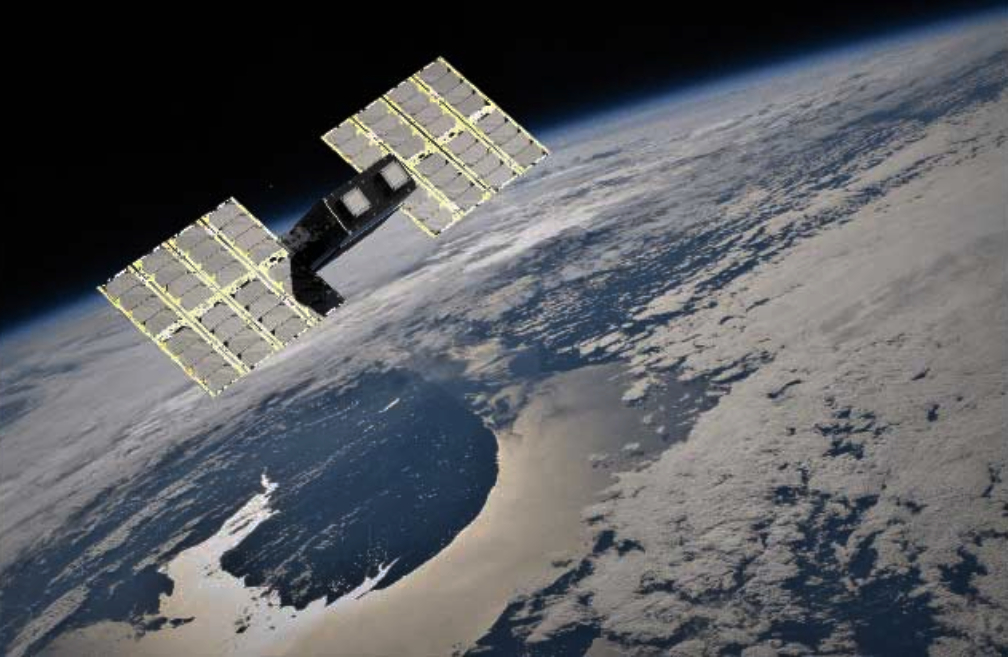Space Flight Laboratory (SFL) successfully deployed 12 satellites on January 24, 2021. The SpaceX Falcon 9 ride-sharing mission carried three different, SFL-designed smallsat platforms into orbit for three separate commercial constellations.

The January 24 launch included:
- Three formation-flying, radio frequency geolocating microsatellites built upon SFL’s 30-kg DEFIANT platform for HawkEye 360 Inc. of Herndon, Virgina.
- One next-generation greenhouse gas monitoring microsatellite, known as GHGSat-C2 or “Hugo”, built by SFL on its 15 kg NEMO platform for GHGSat Inc. of Montreal, Canada.
- Eight commercial communications cubesats developed using the SFL 6U-XL SPARTAN design.

Image is courtesy of SFL.
The deployment of the DEFIANT smallsat also marked the third entirely new smallsat platform developed by SFL to reach orbit in just the past five months. SFL’s SPARTAN bus was introduced for the first time on September 28, 2020, with the launch of two communications cubesats. Plus, SFL’s NAUTILUS smallsat platform made its debut on September 2, 2020, with the launch of the NEMO-HD Earth Observation (EO) mission for Slovenia.
Dating from 1998, SFL’s heritage of on-orbit successes includes 65 distinct missions related to Earth observation, atmospheric monitoring, ship tracking, communication, radio frequency (RF) geolocation, technology demonstration, space astronomy, solar physics, space plasma, and other scientific research.
GHGSat Inc. awarded SFL the development contract for GHGSat-C1 (“Iris”) and C2 (“Hugo”) after SFL built and launched the pathfinding GHGSat-D (“Claire”) atmospheric monitoring smallsat in 2016. Successful detection of ground-based methane emissions from space is due in part to the precise attitude control and target tracking capability of the SFL NEMO bus. In November of 2020, SFL was awarded a contract by GHGSat to build an additional three smallsats for the firm’s commercial, greenhouse gas monitoring constellation.

For HawkEye 360 Inc., SFL built platforms and integrated the HawkEye 360 Pathfinder cluster which was launched into LEO in December of 2018. Based on this success, SFL’s satellite technology was selected for the HawkEye 360 Constellation mission due to the importance of formation flying by multiple satellites for successful RF geolocation and analysis used in maritime situational awareness, national security operations, and many other applications. For the 2021 launch, the larger DEFIANT bus was developed by SFL to accommodate advanced onboard technologies.

Image is courtesy of SFL.
In its 22-year history, SFL has developed smallsats that have achieved more than 135 cumulative years of operation in orbit. These smallsat missions have included SFL’s trusted attitude control and, in some cases, formation-flying capabilities. Other core SFL-developed components include modular (scalable) power systems, onboard radios, flight computers, and control software.
“These launches demonstrate SFL’s unmatched ability to innovate and deliver quality at any size on short schedules,” said SFL Director, Dr. Robert E. Zee. “SFL is a unique microspace provider that offers a complete suite of nano-, micro- and small satellites – including high-performance, low-cost cubesats – that satisfy the needs of a broad range of mission types from 3 to 500 kilograms.”
Small satellites built by SFL consistently push the performance envelope and disrupt the traditional cost paradigm. Satellites are built with advanced power systems, stringent attitude control and high-volume data capacity that are striking, relative to the budget. SFL arranges launches globally and maintains a mission control center accessing ground stations worldwide. The pioneering and barrier-breaking work of SFL is a key enabler to tomorrow’s cost aggressive satellite constellations.
